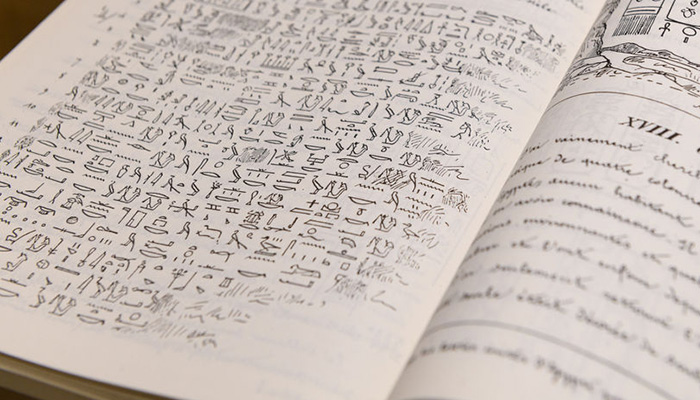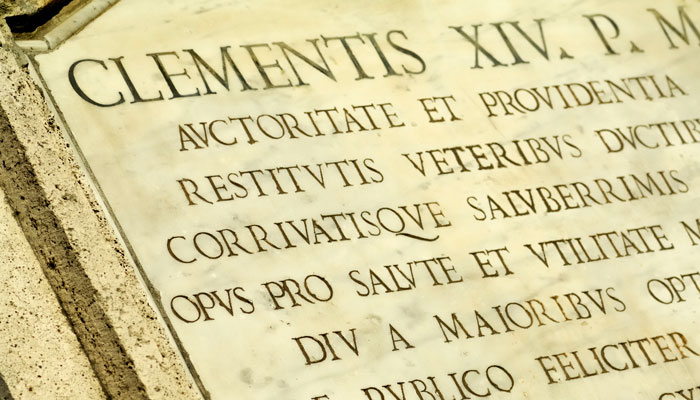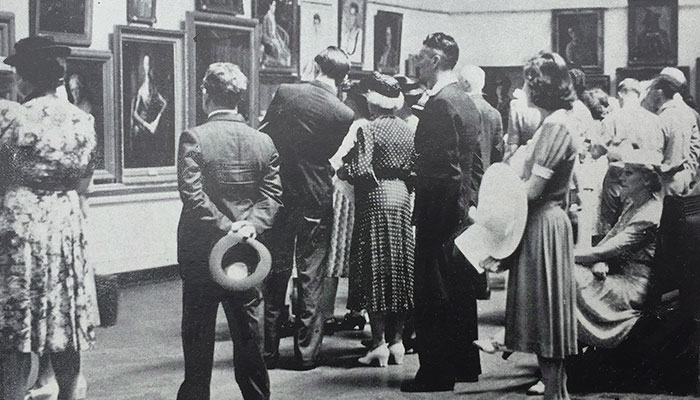Two cigarette cartons that contain the detailed workings of the brilliant scholar Alice Kober are among the 40 or so exhibits at Mysteries Revisited, From Ancient Codes to Comic Culture, at Macquarie University’s stunning new History Museum.
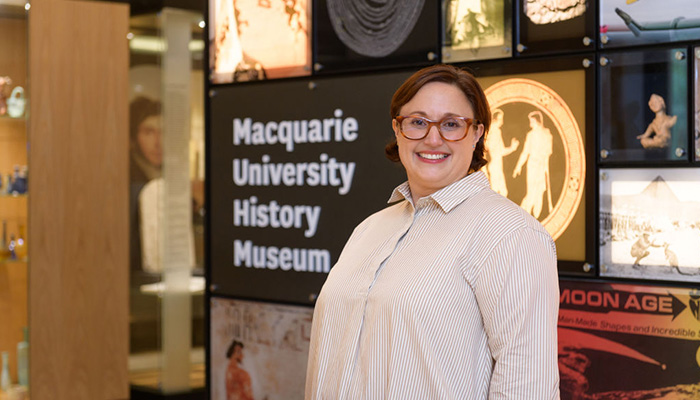
A first: History Museum manager Josephine Touma says some of the items in the new exhibition are being seen for the first time outside the USA. Image credit: Jesse Taylor
This precious archival material, a generous loan from the Program in Aegean Scripts and Prehistory, directed by Professor Thomas Palaima at the University of Texas at Austin, was a key tool for deciphering the mysterious Linear B script, which represents a forerunner of ancient Greek, and it is, says museum manager Josephine Touma, one of the highlights of the new exhibition.
“These cigarette cartons date back to the 1940s and were owned by classicist Alice Kober who made index cards to fit exactly into the cigarette cartons, which served as a low-fi database for decoding Linear B,” Touma says.
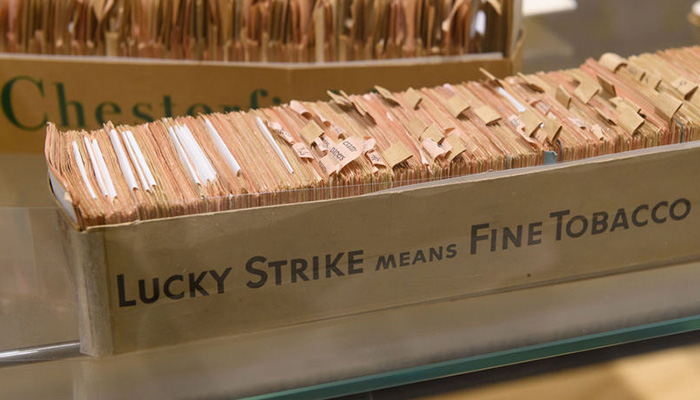
Resourceful: Two cigarette boxes containing Alice Kober’s cards. On loan from the Program in Aegean Scripts and Prehistory at the University of Texas, Austin. Image credit: Jesse Taylor
“This is a modern artefact of academic research and linguistic thinking. I can’t imagine the kind of discipline and intellectual work required to understand and decipher a language that nobody has ever understood before. I’m so happy we can bring that story to light,” she says.
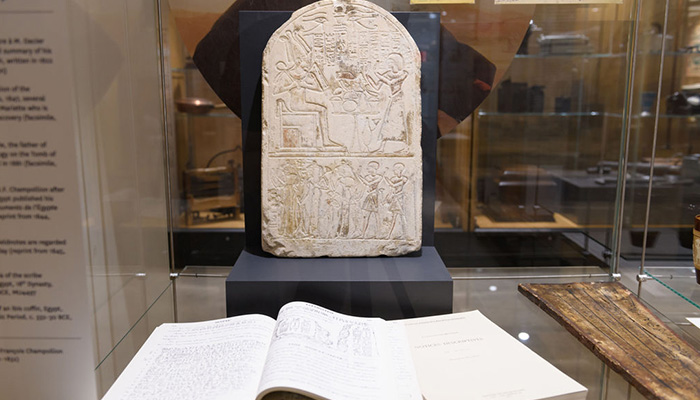
Limestone stela of the scribe Kaemwaset, Egypt, 18th Dynasty, c. 1549–1292 BCE, Macquarie University History Museum collection (MU4497). Image credit: Jesse Taylor
Dr Susan Lupack is considered the Macquarie University expert in the interpretation of the Linear B script and has made a significant contribution to the Linear B component of the Mysteries Revisited, From Ancient Codes to Comic Culture exhibition. Lupack said she was thrilled and grateful to her PhD supervisor, Tom Palaima, to be able to bring these objects across the world to be viewed for the first time outside of the United States.
"My hands were shaking when we unwrapped the box they arrived in. I have been telling all my students and colleagues to go see them – they represent the intense intellectual labour that goes into the decipherment of a language, especially one for which there was no key like the Rosetta Stone that unlocked the meaning behind the symbols."
On script: Modern reprint of Jean-François Champollion's Notices Descriptives (1973 reprint of an 1845 edition). Private loan. Image credit: Jesse Taylor
Echoes of Ancient Egypt
Macquarie University houses the largest collection of ancient manuscripts in Australia. And while Ancient Egypt obsessives will be interested in the papyrus fragment on display, the playful exhibit will also appeal to those intrigued by how this preeminent civilization in the Mediterranean world remains plugged into the zeitgeist.
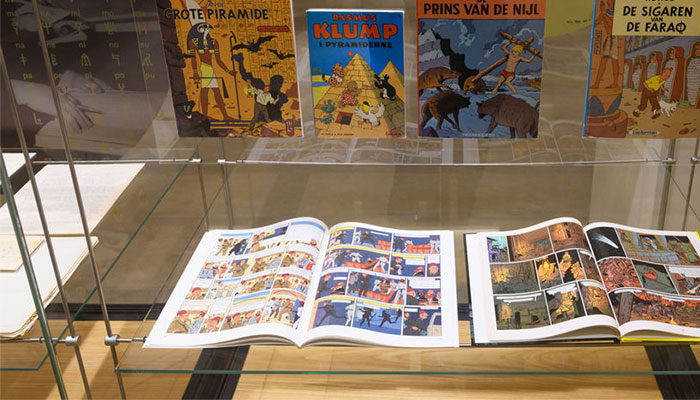
Colourful history: Various European and Australian editions of Egyptian-themed comic books. Private loan. Image credit: Jesse Taylor
Touma says a lot of people say popular culture is an entry point for understanding ancient history. "We have that on display with everything from fake artefacts to comic books, Egyptian-inspired designs and decorative arts. Comic books like Asterix & Obelix and Tin-Tin are a more recent manifestation of the obsession the world has had with ancient Egypt for more than 200 years,” she says.
The exhibition, which was curated by Professor Martin Bommas, museum director at Macquarie University and director of the Qubbet-el-Hawa Research Project in Aswan, Egypt, contains a mix of artefacts, like ancient Egyptian tablets and fragments of panels that have clearly inscribed hieroglyphs.
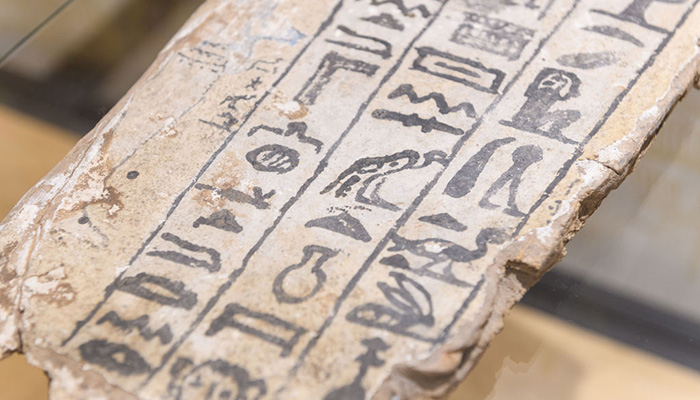
In pieces: Wooden panel fragment with plaster and gesso, Egyptian, unknown date(s) and provenance. Macquarie University History Museum collection (MU3301). Image credit: Jesse Taylor
“The impetus for this exhibition was the 200th anniversary of the decipherment of Egyptian hieroglyphs and the 100th anniversary of the opening of Tutankhamun’s tomb. Both of these events are key moments that sparked an obsession with ancient Egypt that remains evident everywhere from video games and movies to fashion and art.”
Of glyphs and urban myths
In addition to comic books and artefacts from Macquarie University’s collections, visitors will see modern items that have been ‘Egyptianised’ in a section dedicated to fakes and replicas that nod to ancient Egypt.
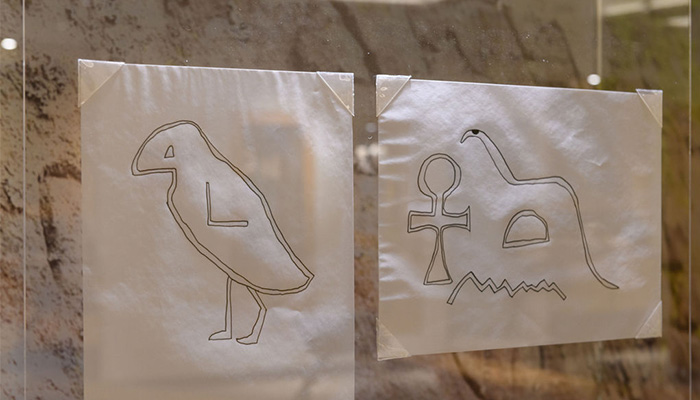
A 1:1 scale drawings of the so-called Gosford Glyphs, by Macquarie student Kerri-Ann Meakins. Image credit: Jesse Taylor
Touma says Macquarie students have also played a part in the exhibition, with the inclusion of the so-called Gosford Glyphs debunking the urban myth surrounding the controversial markings found on a site in Kariong on the Central Coast which were said to be carved by the ancient Egyptians.
“The exhibition concludes with an example of mysterious sandstone carvings found in a national park near Gosford. There’s an urban myth the ancient Egyptians visited Australia and carved these supposed hieroglyphs, which were discovered in the early 80s.
“Macquarie student Kerri-Ann Meakins completed a project with Professor Bommas that included visiting Gosford to trace the glyphs. Historians believe that whoever carved the glyphs had some understanding of true Egyptian hieroglyphs, but they are not quite right, and certainly a hoax.”
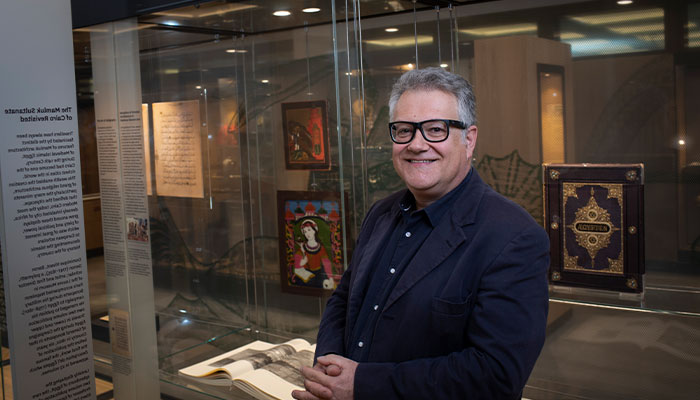
Museum director: Professor Martin Bommas, pictured, at the Macquarie University History Museum.
From November, the Museum’s student volunteers will also be invited to blog about their own personal perspectives on the exhibition and how they have encountered Egyptomania and other obsessions with the ancient world in their own lives.
The Macquarie University History Museum is located at 25C Wally's Walk and is open to the public on weekdays between 10am and 5pm.
Professor Martin Bommas is museum director at Macquarie University and director of the Qubbet el-Hawa Research Project in Aswan, Egypt.
Dr Susan Lupack is a senior lecturer, Department of History and Archaeology, Macquarie University.

